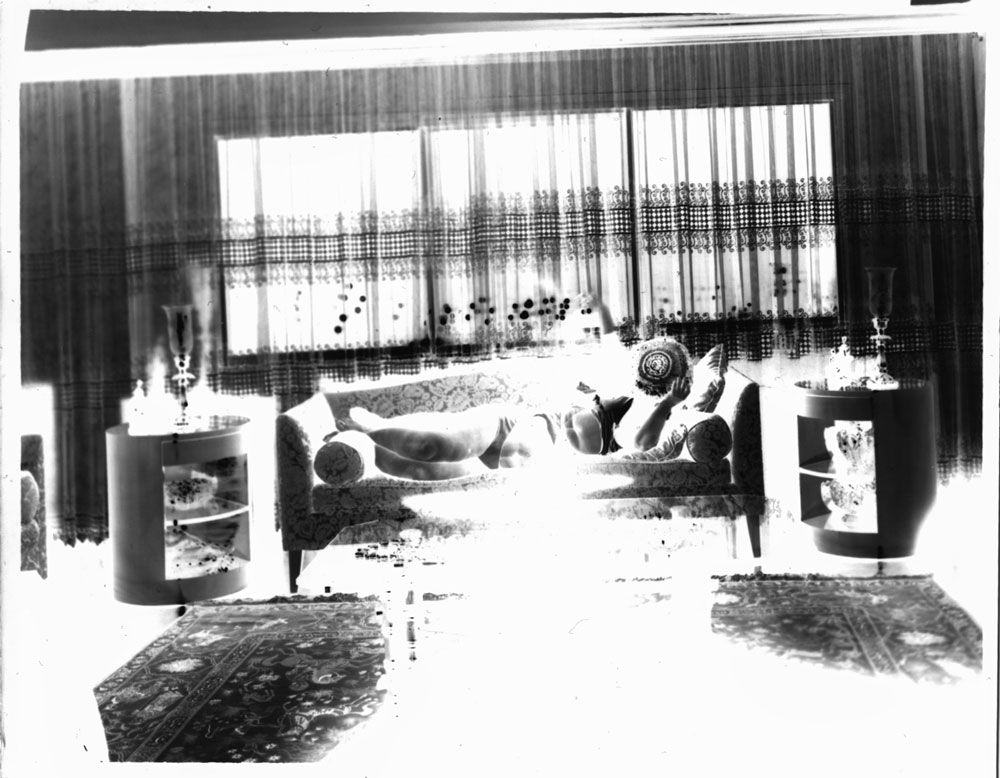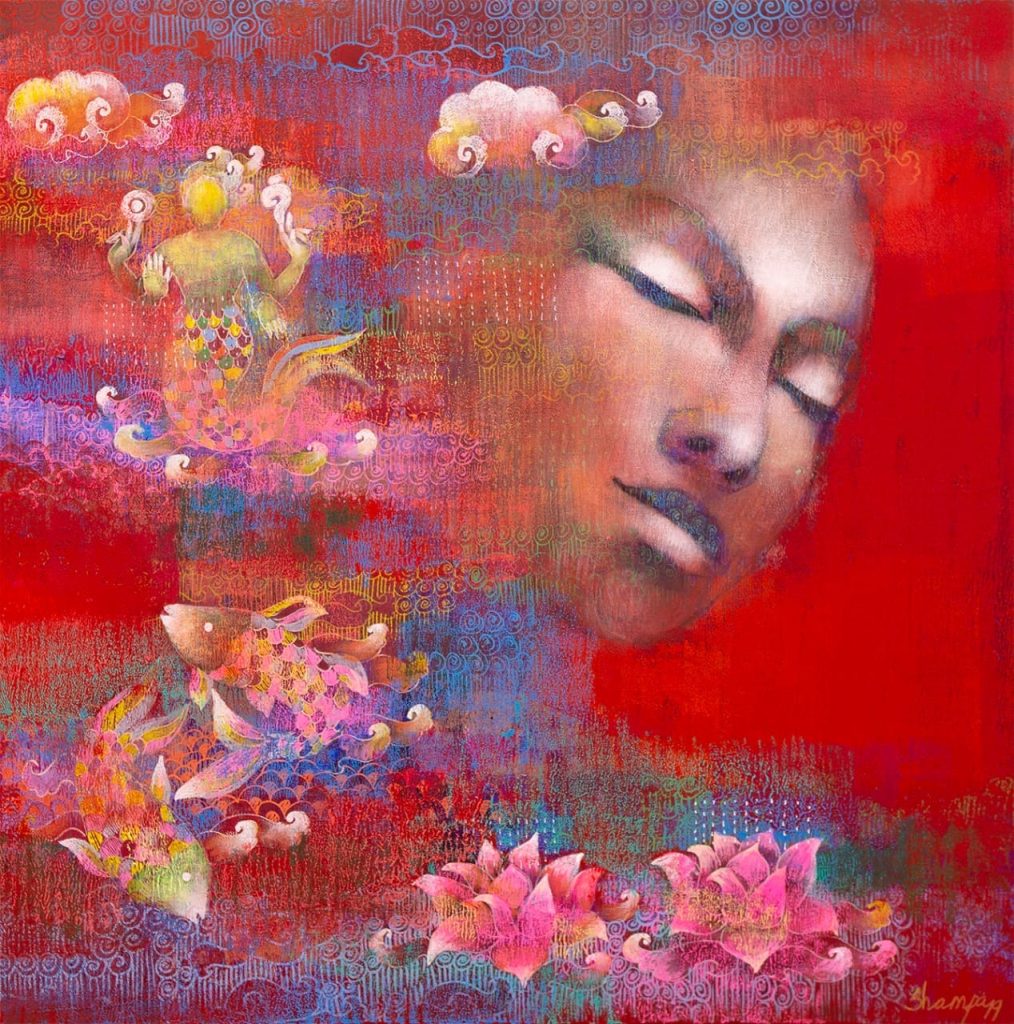The first solo exhibition in India by Tehran-based visual artist Zahra Yazdani, Scripted Selves: Sutures of Signs and Symbols at Latitude 28 gallery in Delhi, charts the emotional breadth of the human body. Yazdani transformed the two spaces into settings for her latest artwork, inviting artists to pose for her camera. Her photography demonstrates Yazdani’s ability to encapsulate life in a single frame, and her ongoing exhibition is expected to be an enthralling voyage through time-capsulated moments.
After three years, Yazdani is prepared to take her experimental photography to the next level with her first solo exhibition in India. Yazdani started as a painter before switching to experimental photography since she felt it was a more fitting medium for her work, capturing fiction, reality, and exotic-intricate social norms and structure. She states, “I became aware I could exploit its propensity to obstruct photos. When taking pictures, you can clip off a portion of the body and paste it into another image. As though the camera helps you with all of this copying, pasting, and “dismantling” of corpses.” Scripted Selves: Sutures of Signs and Symbols immerses the audience in an imagined universe halfway between an operation room and a photography studio.
Yazdani presents photographic pieces made with an analogue camera and the handcrafted gelatin silver printmaking method used two centuries ago by alchemists and photographers. Its mortal existence is anchored by a body permeable to human touch, which is not far from its implicit symbolic significance. The body’s rich storage of paradoxes, such as mortal/divine, essentialism/abstract, pure/profane, and deceit/purity, makes it fascinating.
Yazdani splits man into a mortal body and an everlasting soul by utilising Plato’s concept of “Forms.” Later on, this mysticism was reconstructed in the modern form as a conflict between body and intellect in René Descartes’ “Meditations on First Philosophy”, and sifting through the pages of human history and nature, the triad – theologists, philosophers and cultural practitioners – have read the body as an inquiry into signs of heightened morality, elevated aesthetic capacity and linguistic sophistication.
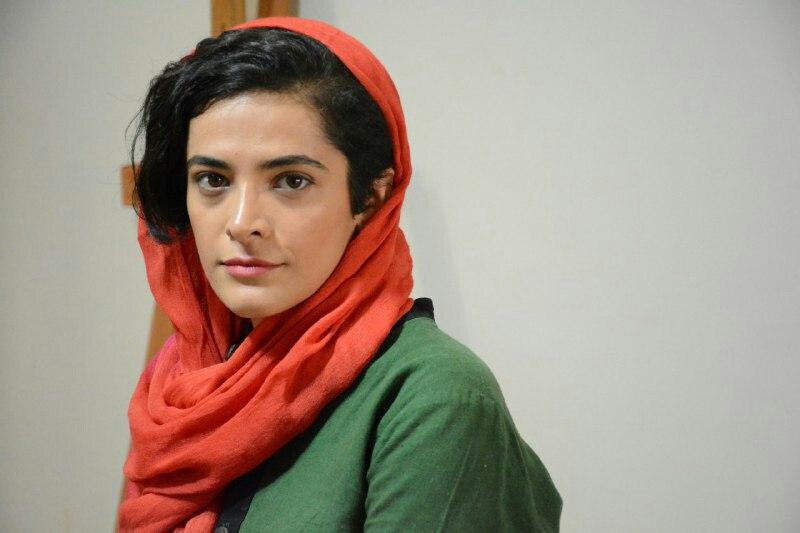
In her analogue-based photography technique, Zahra Yazdani aims to embrace the body as the embodiment of nuanced rawness and intricacies. Yazdani portrays the political reality of the body paradoxically, and invincibility and vulnerability are alluded to by the combined talent of skin and contortion. Yazdani transforms personal space into a planned environment to arrive at this stage. The frozen frame blurs the barriers between truth and fiction as it goes beyond serving as merely an episodic recorder of temporal existence and emphasises the performative body’s event.
Fiction is based on circuits of imagination that create the body as an embodiment of non-othering. In contrast, reality is constructed on the terminology of dominance, using the body as a platform for objectification. However, Yazdani believes that keeping it blurry does not cause it to become hidden. The performative body’s apparent sutures, which trace the genealogy of signs and symbols, have scripts embedded on the skin scales.
Photographs are used in this piece to evoke the soft textures of linen, and they also give the impression of moving and swaying as if they were using their agency to fold, entangle, and misappropriate. In Yazdani’s hands, analogue photography acts as a metaphor to extend the layers of the body by evoking warped angles of view and using gritty textures. Put differently, it’s a technique to undermine the widely held belief that a photograph accurately captures a little slice of reality.
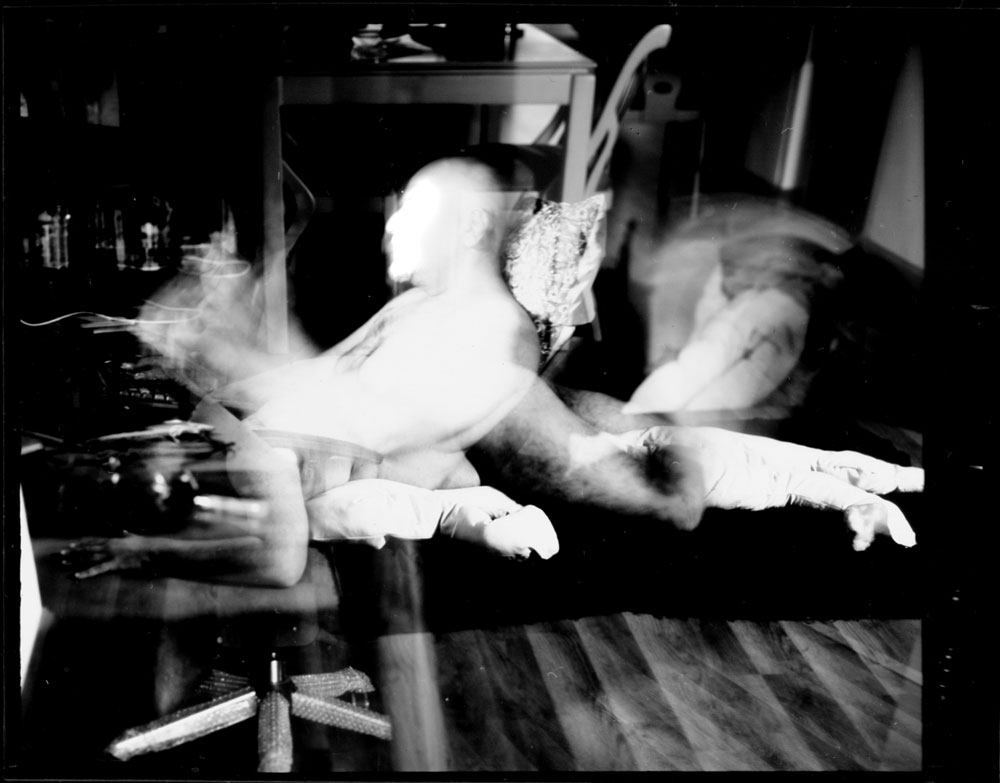
The photograph’s monochromatic look, accentuated by the captivating interplay of light and shadow, subverts the political challenge of establishing an ontological point regarding the body. The supremacist assertions about the material actuality of the body are incompatible with the immateriality of the body, as demonstrated by the skilful economy of imperceptibility. The relative obscurity of the private area is not the only manifestation of the intimacy between the photograph’s subject and the camera eye. Private areas, ordinarily off-limits to the public, acquire a new significance when viewed through the prism of “manufactured authenticity” (a term coined by Dean MacCannell). The photographer plays the role of both director and spectator, putting together scenes that resemble reality yet are consciously created.
The manipulation reflects the sincerity of feelings and behaviours in the private domain and explores it as a domain of conformity and theatricality. The closeness of the secret chamber attests to the dramatic brilliance of the photographer’s equal entrance and exit from the frame. Despite the protagonist’s indistinguishable appearances, Yazdani’s presence overcomes the inherent ambiguity of photography. The authorship sheds light on the tense identity game between confirmation and anonymity. The reliance and liberation experienced on this playfield highlight the photograph’s function as a window and mirror. The analysis of the performance as a whole considers our cognitive processes and styles of perception.
Through photography, operating as a form of power, the photographer and the subject are pushed to narrate a production of the knowledge systems about their preferences and adherences. These enactments spearhead an alternative history, another form of knowledge that counters what is seen as given and accepted as history without contestation. If crafting these photographs lends a visual language to the noise of the private room, then Yazdani’s art metamorphoses them into a moment of self-revelation only to initiate a dialogue around the politics of scripts. The introspection fraught within the sutures of signs and symbols envisions a scope of solidarity and justice through remembering.
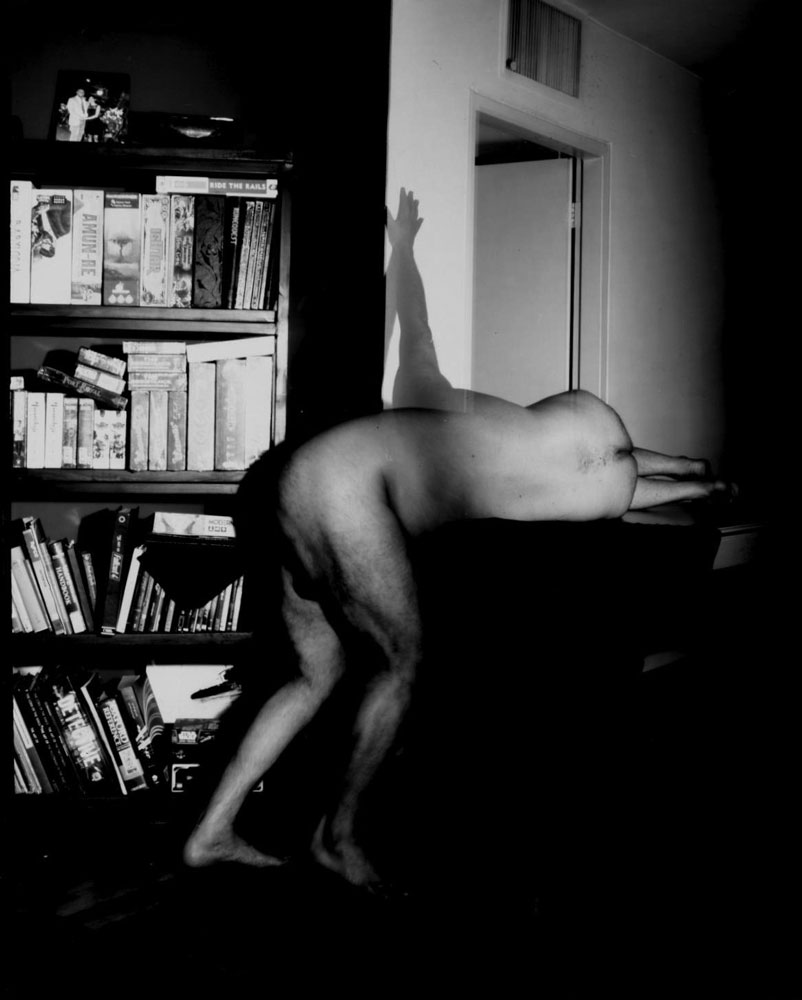
In the current times, determined by a constant urge for visual stimulation, the camera, as the observant eye of Yazdani, addresses the streams of fragmented memory. The uniqueness of the photographs rests with Yazdani’s desire to revisit the body’s events as a site of history and injustice in a visual taxonomy that creates the journey of articulating a constant struggle for resilience. Scripted Selves: Sutures of Signs and Symbols opens the possibility of an avenue removed from the logic of systematic order to draw on the agency of body in the face of past (in) actions and a contemporary effort to blur the dichotomy of us versus them.

